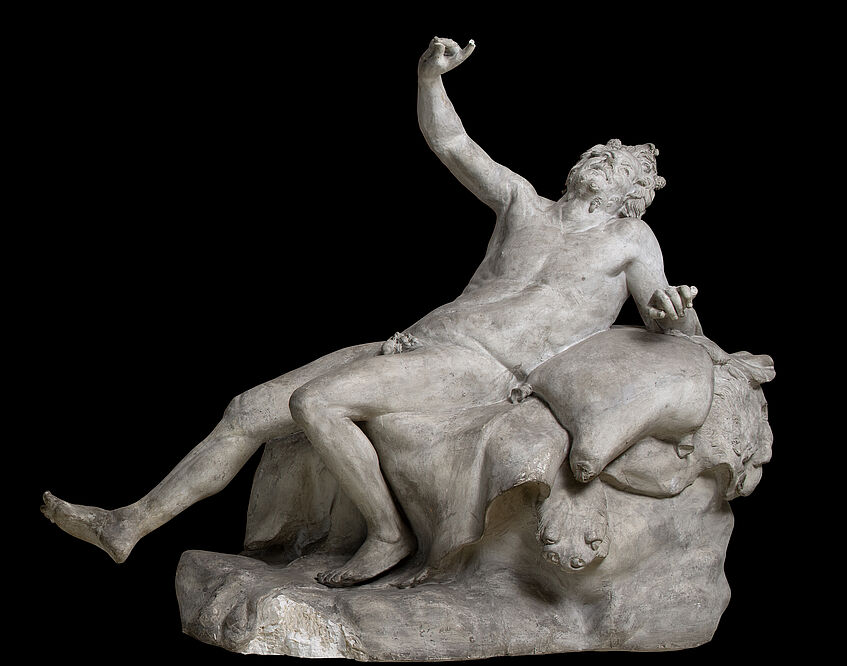Tour C: Dress, Nudity and Nakedness in Antiquity
What are the politics of getting dressed, undressed, and naked? What does it mean to be nude? The answer depends on who you are, and the situation that you are in.
C2 Unheroic male nudity

[IKA, Photo: Kristina Klein]
Inv.-Nr. 1370
Statue eines lagernden Satyrs (sog. Schnippchenschläger)
Neapel, Nationalmuseum 5628
römische Kopie vom Ende des 1. Jhs. v. Chr. nach einem Original aus dem 3./2. Jh. v. Chr.
Not all nudity is heroic. This cast represents one of the few large-scale bronze statues that have survived from antiquity – a reclining satyr (a follower of Dionysios the god of wine, who was half man and half goat) that was discovered in the Villa of the Papyri in Herculaneum. When Mt Vesuvius erupted in 79 CE, the town of Herculaneum and its larger neighbour Pompeii was entombed in volcanic ash, preserving many finds that would otherwise have been lost.
The statue originally stood at the western end of a peristyle courtyard garden at the centre of the villa, and likely dates from the end of the first century BCE by Apollonius of Athens (we know this because the sculptor signed his name on his work). It seems to have been made from a standard type or model, as the basic composition of the figure is known from other artworks.
The satry reclines on a rock in a pose of drunken collapse. At his left hand lies a half-full wineskin, and around his head is a pine wreath with corymboi (clusters of flowers). He clicks the thumb and middle finger of his raised right hand, a gesture associated with Dionysiac worship. The bronze of the original statue would have been polished a dark golden colour, like that associated with tanned Mediterranean-hue skin. To make the statue more life-like, the eyes would have been inlaid with coloured stone or glass, the lips coated in red copper, and the teeth with silvery tin.
The satyr is depicted with the soft, looser flesh of a middle-aged man, in sharp contrast to the taut and muscular bodies of young athletes and heroes that are common in sculpture of the classical period. His face is relaxed in an expression of pleasure and abandon, his lips curled back in a grin and cheeks bulging, unlike the calm and serene faces of idealised youths from classical statuary. This nudity is far from heroic, but he does seem to be having fun.
